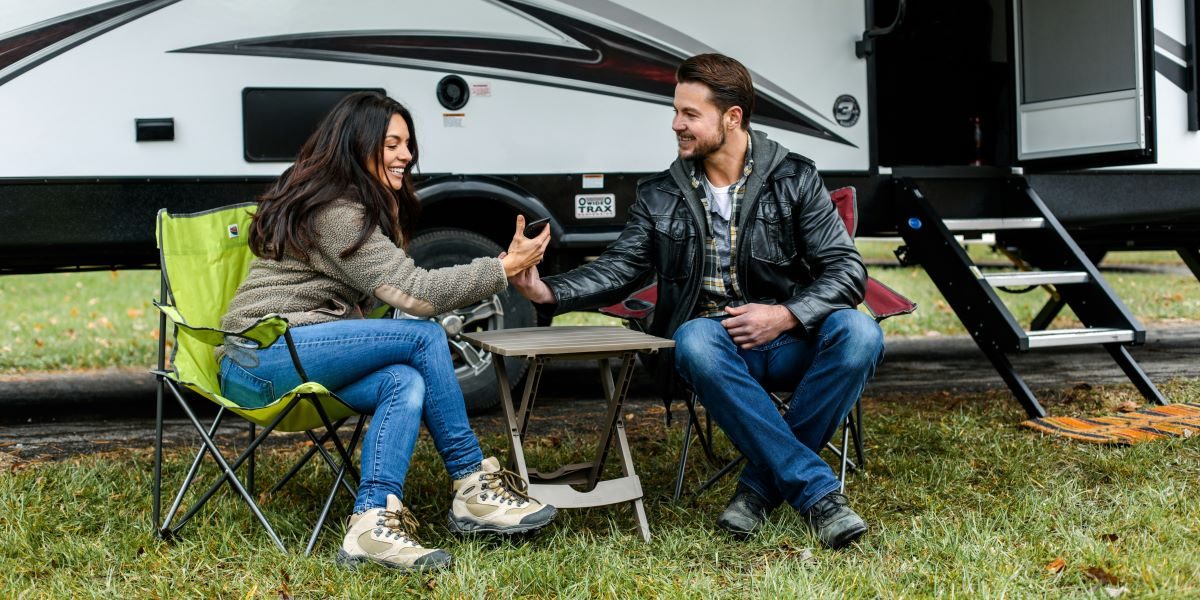What makes Arizona one of the premier states for an RV adventure? Its diverse terrain, ranging from the towering cliffs of the Grand Canyon to the Sonoran’s open deserts, offers endless outdoor exploration opportunities.
Whether hiking through ancient rock formations, biking across scenic trails, or stargazing under some of the darkest skies in the country, Arizona delivers a road trip experience like no other. With well-maintained highways, RV-friendly campgrounds, and countless natural wonders, planning the correct route ensures a journey filled with adventure, history, and breathtaking landscapes.
Route Overview – Mapping Out the Perfect RV Journey
An RV tour through Arizona offers diverse landscapes and iconic destinations. A well-planned route could begin in Northern Arizona, exploring the Grand Canyon, Antelope Canyon, and Monument Valley, then head south to Central Arizona for Sedona’s red rocks and Flagstaff’s pine forests. Continue to Southern Arizona for the Saguaro National Park, Tucson’s desert trails, and historic sites like Tombstone and Bisbee. This route covers Arizona’s scenic regions while offering RV-friendly highways, including U.S. Route 89 and Interstate 17.
Timing your trip is essential to avoid extreme weather. The ideal months for RV travel are March through May and September through November when temperatures are moderate. Many destinations, like the Grand Canyon and Sedona, have RV campgrounds with full hookups, while more remote spots like Monument Valley require boondocking. Always check road conditions, especially during monsoon season in late summer, and plan refueling stops in advance when traveling through sparsely populated areas.
RV Essentials for Outdoor Enthusiasts
Proper gear ensures a safe and enjoyable RV adventure through Arizona’s rugged landscapes. Reliable GPS and offline maps are essential for navigating remote areas where cell service is unreliable. A solar-powered generator or extra power banks charge devices, especially when boondocking.
For outdoor activities, bring hydration packs, UV-protective clothing, and sturdy hiking boots to handle rough terrain. Bike racks and repair kits are necessary for cyclists, while stargazers should pack a telescope, red-light flashlight, and star maps for optimal night viewing. Many trails and campgrounds lack water stations, so carrying extra drinking water and water purification systems is critical.
Emergency preparedness is key when traveling through Arizona’s deserts and mountains. A first-aid kit with snakebite treatment, thermal blankets, and extra food supplies can be lifesaving in unexpected situations. Keep an emergency roadside kit with jumper cables, a tire repair kit, and extra fuel for breakdowns in remote areas. Always keep the phone number of a local Arizona RV towing service handy (ideally written down on paper), since you never know when you might need it.
A satellite communication device or emergency beacon is highly recommended for hiking or biking alone. Wildlife encounters, including rattlesnakes and scorpions, require awareness and proper precautions. Checking weather conditions before each leg of the trip and having a backup plan for extreme heat, flash floods, or sudden temperature drops will help ensure a safe and successful journey.
Hiking Through Time – Arizona’s Reputable Trails for RV Travelers
Arizona’s landscape tells a story of geological evolution and cultural history, best explored on foot. These reputable hiking destinations offer stunning views, diverse terrain, and RV-friendly access points.
The Grand Canyon (South Rim & North Rim)
The Bright Angel Trail is one of the iconic hikes in the U.S., descending into the canyon with rest stops and water stations. The Rim Trail offers a more manageable alternative with panoramic views and shuttle access. During peak season, RV camping is available at Trailer Village RV Park on the South Rim and North Rim Campground.
Sedona’s Red Rock Trails
Sedona’s hiking trails feature striking sandstone formations and scenic desert views. Cathedral Rock Trail is a steep but rewarding climb with breathtaking summit views. Devil’s Bridge Trail leads to Arizona’s prominent natural sandstone arch. The area has multiple RV parks, including Rancho Sedona RV Park and Verde Valley RV Resort.
Saguaro National Park & Tucson’s Desert Trails
Saguaro National Park, split into east and west districts, showcases the nation’s enormous cacti. The Hugh Norris Trail is a moderate, 10-mile out-and-back hike offering expansive desert views. For an easier option, the Valley View Overlook Trail provides scenic vistas in just under a mile. Gilbert Ray Campground, located nearby, accommodates RVs with electric hookups.
Biking Across Arizona’s Diverse Landscapes
Arizona offers a variety of biking trails, from scenic desert rides to high-altitude forest paths. Monument Valley’s Scenic Loop provides a challenging but rewarding dirt-road ride through towering red sandstone formations, offering an immersive experience in Navajo Nation territory.
For a smoother ride, Prescott’s Peavine Trail follows an old railway bed alongside Watson Lake, featuring breathtaking rock formations and water views. In Sedona, Bell Rock Pathway is a beginner-friendly option with stunning red rock scenery, while experienced riders can tackle the Hangover Trail, known for its technical terrain and steep descents.
For long-distance riders, segments of the Arizona Trail are RV-accessible, allowing cyclists to explore sections of the state’s 800-mile route spanning from the Mexico border to Utah. The Loop in Tucson, a 131-mile network of paved paths, is ideal for road cyclists and offers access to the city’s premier outdoor attractions. Many RV parks, including those in Sedona and Tucson, provide direct access to bike trails, making Arizona a prime destination for cycling enthusiasts.
Stargazing Under Arizona’s Dark Skies
Arizona is home to some of the premier stargazing locations in the U.S., thanks to its low light pollution and clear desert skies. Flagstaff, the world’s first designated Dark Sky City, offers exceptional night views, with Lowell Observatory providing public telescope sessions and guided tours.
Nearby, Wupatki National Monument delivers a remote, unspoiled view of the Milky Way, with designated stargazing spots easily accessible by RV. Kitt Peak National Observatory, located southwest of Tucson, houses an extensive collection of telescopes worldwide and offers night programs for visitors looking to explore deep-space objects.
For a more secluded experience, the Sonoran Desert provides unparalleled sky visibility, especially in areas like Organ Pipe Cactus National Monument and Chiricahua National Monument. The Grand Canyon’s North Rim offers an elevated vantage point with virtually no light interference, making it one of the ideal places to observe meteor showers. Many Arizona state parks, such as Lost Dutchman State Park and Kartchner Caverns State Park, host astronomy events and have RV-friendly campgrounds, making them ideal stops for travelers seeking dark skies.
Conclusion
What better way to experience Arizona’s diverse landscapes than by RV, where every stop offers a new adventure? From hiking deep canyons to cycling scenic trails and stargazing under pristine desert skies, an RV tour through Arizona provides an unmatched combination of outdoor exploration and natural beauty.
Careful planning, essential gear, and emergency preparedness ensure a safe and memorable journey. Whether navigating the red rocks of Sedona, biking through Monument Valley, or gazing at the Milky Way in the Sonoran Desert, Arizona’s terrain and dark skies make it a premier destination for RV travelers seeking adventure.
Published by Anne C.

















